How Do You Know if Its Safe to Buy From a Website?
In this article, we offer easy and effective tips to help you avoid scam websites, check links, and verify the trustworthiness of any site or URL you want to visit.
Here's how to bank check if a website is safe:
1. Employ a website prophylactic checker
To quickly check if a site is legit or a specific URL is safe, use a website safety checker like Google Rubber Browsing. According to Google, their website checker "examines billions of URLs per solar day looking for unsafe websites," which makes this a great website safety-bank check tool.
To find out if a link is prophylactic, just re-create/paste the URL into the search box and hit Enter. Google Safe Browsing's URL checker will test the link and study back on the site's legitimacy and reputation in just seconds. It's that easy to use Google'due south URL scanner.
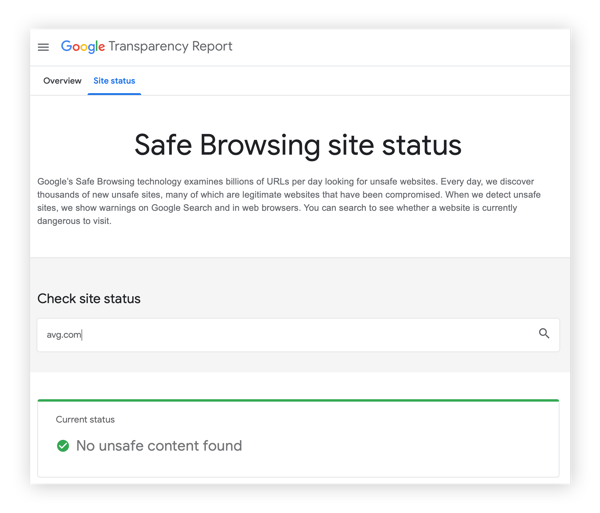 Google knows the web — that's why its site checker is so accurate.
Google knows the web — that's why its site checker is so accurate.
A similar unbiased safety tool is VirusTotal's free website security checker, which inspects sites using over seventy antivirus scanners and URL/domain blacklisting services. This link checker for viruses detects various types of malware, estimator viruses, and other security threats.
VirusTotal's URL checker works only like the Google Prophylactic Browsing tool: only enter the URL you want to cheque and hit Enter to see a condition report. It'll speedily scan URLs and report back immediately.
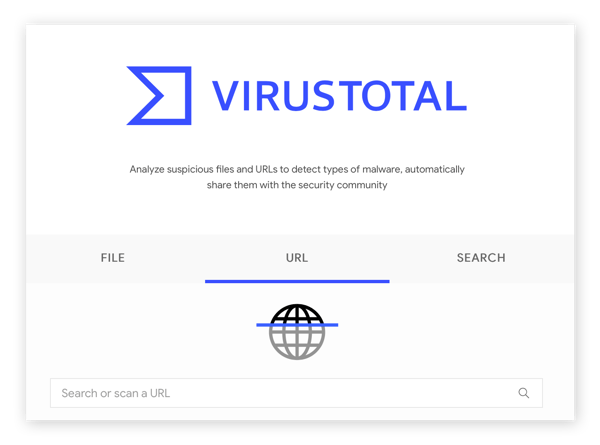 Is this website legit? VirusTotal has answers.
Is this website legit? VirusTotal has answers.
Whichever legit website checker you cull, bookmark the page to employ later — it'southward of import to test if a site is legit before you do anything sensitive, like enter your credit card details.
2. Utilize your browser's rubber tools
Today's near pop and all-time web browsers include security features to assist you lot stay prophylactic online. These congenital-in browser tools can cake annoying pop-ups, transport Do Not Runway requests to websites, disable Flash content, end malicious downloads, and control which sites can access your webcam and microphone.
Accept a moment to review your browser security settings. Here's how:
-
Chrome: Settings > Avant-garde > Privacy and security
-
Border: Settings > Advanced settings
-
Firefox: Options > Privacy & Security
-
Safari: Preferences > Privacy
To stay even safer and more private, use a browser built with privacy at the forefront. AVG Secure Browser masks your digital fingerprint to block targeted advertizing, malicious extensions, and phishing attacks, helping to prevent identity theft — all for free. Plus, forced HTTPS encryption ensures your connectedness is safe.
three. Double-bank check URLs
Checking a URL before clicking on information technology is a uncomplicated manner to perform your own website safety examination. In other words, to bank check if a link is rubber, discover out where the link leads before you click on it. How? Just mouse-over any link to verify the URL it'due south actually linked to.
Try hovering your mouse over this.
Hover your mouse over the link above, but don't click it. In Firefox and Chrome, you should run across the URL that it links to at the bottom-left of your browser. If you check links earlier you click them, you'll become your own scam checker!
You tin also check URLs and see if links are safe on Safari, but it requires one extra stride. Outset, click the View carte du jour, and and so select Show condition bar. And so, when you hover over the link, y'all'll see where information technology leads in the lesser-left corner of your screen.
Make sure the URLs are spelled correctly, also. Nigh people just glance at text on the spider web. Hackers know this and volition oftentimes substitute visually similar characters (e.g., "Yah00.com" instead of "Yahoo.com") to fob y'all into visiting their phishing sites and unwittingly giving them your passwords, credit card numbers, and other private data.
Don't fall for this play a trick on — it only takes a moment to verify a link is safe.
4. Check for HTTPS
Making sure whatever website yous visit uses HTTPS is another way to make sure the site is safe.
HTTP (Hypertext Transfer Protocol) is the fundamental protocol for sending data between your web browser and the websites you visit. HTTPS is just the secure version of this — the "South" stands for "secure."
HTTPS is frequently used for online banking and shopping, because information technology encrypts your communications to prevent criminals from stealing sensitive information similar your passwords.
To see if a site uses HTTPS, check for the padlock in your browser's navigation bar. If you see it, the site y'all're on is using a trusted SSL digital certificate to protect your connection to it.
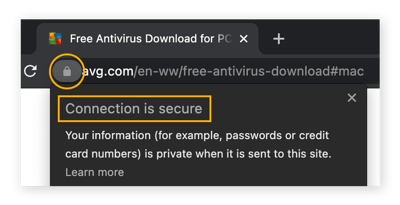 Checking for the padlock is an piece of cake style to cheque website safety.
Checking for the padlock is an piece of cake style to cheque website safety.
This isn't a silverish bullet, though. Some phishing websites could be using HTTPS to endeavor to laissez passer the legitimacy test. Regardless, if a website doesn't take that padlock, don't enter your personal details.
Y'all can get extra protection by combining HTTPS encryption with a virtual private network (VPN) — which encrypts your internet traffic from the moment information technology leaves your device until it reaches the website you're visiting, and back.
5. Expect for a privacy policy
If you're already on a website, simply tin't tell if the site is legit, look for a privacy policy. Reputable websites should have a privacy policy page, as it's the law in many countries. Click around the site to find their privacy policy — and exist suspicious if you tin can't find one.
 Is this link safe? A privacy policy is ane good sign that it might be.
Is this link safe? A privacy policy is ane good sign that it might be.
Unfortunately, many privacy policies are full of legalese and hard to empathise. Search for words like "third parties," "data," "store," "retain," and like terms if y'all're curious how the site handles your personal data.
Some websites might go on your data, while others might sell it to data brokers. For example, here's what Google does with your information — you can learn how to download your Google data here.
half-dozen. Don't blindly trust "trust" badges
Trust badges, or trust "seals," usually appear on shopping or ecommerce sites to betoken trustworthiness. If a customer scans the site, these icons leap out every bit a sign of legitimacy.
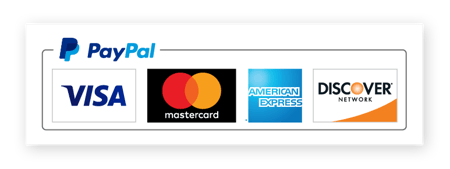 Trust seals may look safe, simply they're not a real website condom check.
Trust seals may look safe, simply they're not a real website condom check.
While many legitimate sites also use trust badges, they lack official backing. Many sites simply re-create and paste these icons, without having any existent security. In fact, in that location are articles out there advising ecommerce sites to create their own trust seals simply to increase sales.
In theory, you should be able to click on the trust seal and see if you can verify it. In practice, a trust badge doesn't tell yous anything well-nigh that site's reputation or security practices. And then exercise your due diligence, particularly earlier shopping online.
To figure out if an ecommerce website is condom, try searching "is [ecommerce shop] a scam?" or "[ecommerce] shop reviews." If it's a scam, y'all'll likely detect a lot of negative reviews. If you tin can't find anything, avoid that particular shop and notice a legit, well-reviewed 1 instead.
vii. Learn the obvious signs that a site is fake
Sometimes a website looks so spammy, you tin can tell immediately without having to actually bank check the site's reputation. If you accidentally land on a website similar this, there are some obvious signs of malware you tin look for.
You should be suspicious that a website is imitation if yous notice these warning signs:
-
On-site spam: If a site has lots of flashing warnings, exclamation marks, or other kinds of spam, it's probably a scam website.
-
Pop-ups: If you go far on site and tons of pop-ups appear, close the browser window immediately — the site could be infected with malvertising, adware, or another type of malware or virus. Clicking the pop-up window might trigger other popular-ups, then shut the window by pressing Alt + F4 (on Windows) or using Windows Job Director (Ctrl + Shift + Esc) to force-quit the process.
-
Malicious redirects: If you go immediately redirected to a different website, specially a suspicious ane, this is a malicious redirect. It can mean that the original site is simulated or that a legitimate site got hacked. The original site may not have malicious intentions, merely until they clean upwardly their lawmaking and remove the malware, you lot don't want to be there.
-
Search engine warnings: When you search online, the search engine may brandish warnings next to some links, such as "This site may exist hacked" or "This site may harm your computer." Though these warnings aren't completely accurate, if yous see one, visit a different URL instead.
 If you encounter a warning about a site you're about to visit, become elsewhere.
If you encounter a warning about a site you're about to visit, become elsewhere.
Any of these signs mean the website is not safe to visit, and you lot should find a legitimate site instead — especially for online shopping.
8. Apply "whois" to look up the domain owner
Desire to know who's backside a sure website? Use whois (pronounced "who is") to notice out who owns the domain, where and when the site was registered, contact information, and more than. Try a whois lookup — it volition assist you determine if the site is legit or fraudulent.
 Is this site legit? Enter any URL to learn who'southward backside the website.
Is this site legit? Enter any URL to learn who'southward backside the website.
9. Phone call the company
If y'all're all the same not sure if a website or company is legit or fake, find their contact details and call them. If the number doesn't exist — or if someone answers with no knowledge of the website — it'south probably a scam.
To detect a website's contact details, look for a "Contact U.s.a." or "Almost Us" link near the top or at the lesser of the folio. Or try a Whois Lookup (tip #8 higher up) to encounter if that reveals a phone number.
x. Install web security tools
A robust cybersecurity tool also works every bit an effective scam checker to aid yous avert fake websites. Download AVG AntiVirus Free to get essential virus and malware protection, including our Behavior Shield, which blocks malicious code from hijacking your PC. Plus, y'all'll get essential protection against infected downloads and dangerous email attachments.
Foreclose dangerous websites with AVG Secure Browser
If you apply the tips to a higher place, y'all'll become a pro URL checker in no time. But even safe websites tin contain abrasive ads or spam, online tracking, and browser fingerprinting applied science that can identify you out of a crowd.
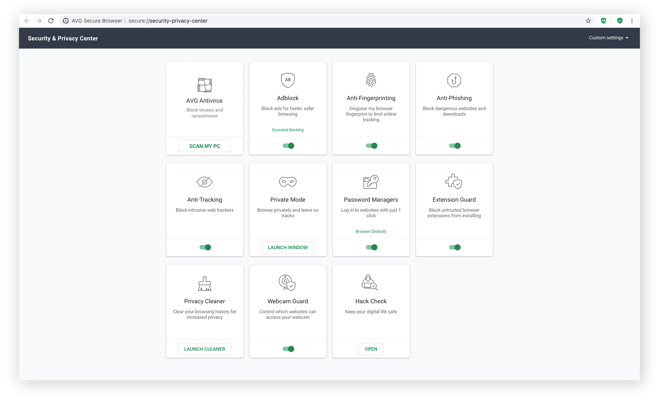 Browse securely with AVG Secure Browser's suite of privacy features.
Browse securely with AVG Secure Browser's suite of privacy features.
AVG Secure Browser was built with your privacy and security in mind. Use our safe browser to automatically block ads and stop even the most advanced tracking and fingerprinting technologies, all while browsing up to four times faster.
Source: https://www.avg.com/en/signal/website-safety
0 Response to "How Do You Know if Its Safe to Buy From a Website?"
Enviar um comentário